Imagine a garden filled with the delicate, snowy blooms of a white lavender plant, their soft fragrance drifting on the breeze, creating a serene oasis in your backyard. Unlike its purple cousin, the white lavender plant offers a rare elegance that elevates any space, from modern garden designs to cozy indoor pots. Whether you’re a novice gardener or a seasoned plant enthusiast, growing a thriving white lavender plant is within your reach with the right knowledge. In this comprehensive guide, we’ll share expert-backed tips to help you cultivate vibrant white lavender, ensuring stunning blooms and lush growth. Drawing on years of horticultural experience and insights from lavender growers, this article will empower you to transform your garden with this captivating plant. Let’s dive in! 🌼
What Makes the White Lavender Plant Unique? 🌼
Understanding White Lavender Varieties
White lavender, a stunning variation of the Lavandula genus, captivates with its creamy-white flowers and silvery-green foliage. Popular varieties include Lavandula angustifolia ‘Alba’ and ‘Nana Alba,’ each with distinct traits. ‘Alba’ boasts tall, fragrant spikes ideal for borders, while ‘Nana Alba’ is compact, perfect for containers. Unlike traditional purple lavender, white lavender offers a softer aesthetic, with blooms that glow under moonlight, making it a favorite for evening gardens. Its fragrance, though similar to purple lavender, is slightly sweeter, adding to its allure.
According to Dr. Emily Carter, a botanist specializing in Mediterranean plants, “White lavender’s unique coloration makes it a standout in ornamental gardening, but its care requirements are nearly identical to other lavenders, making it accessible for all skill levels.” Understanding these varieties helps you choose the right one for your garden’s needs.
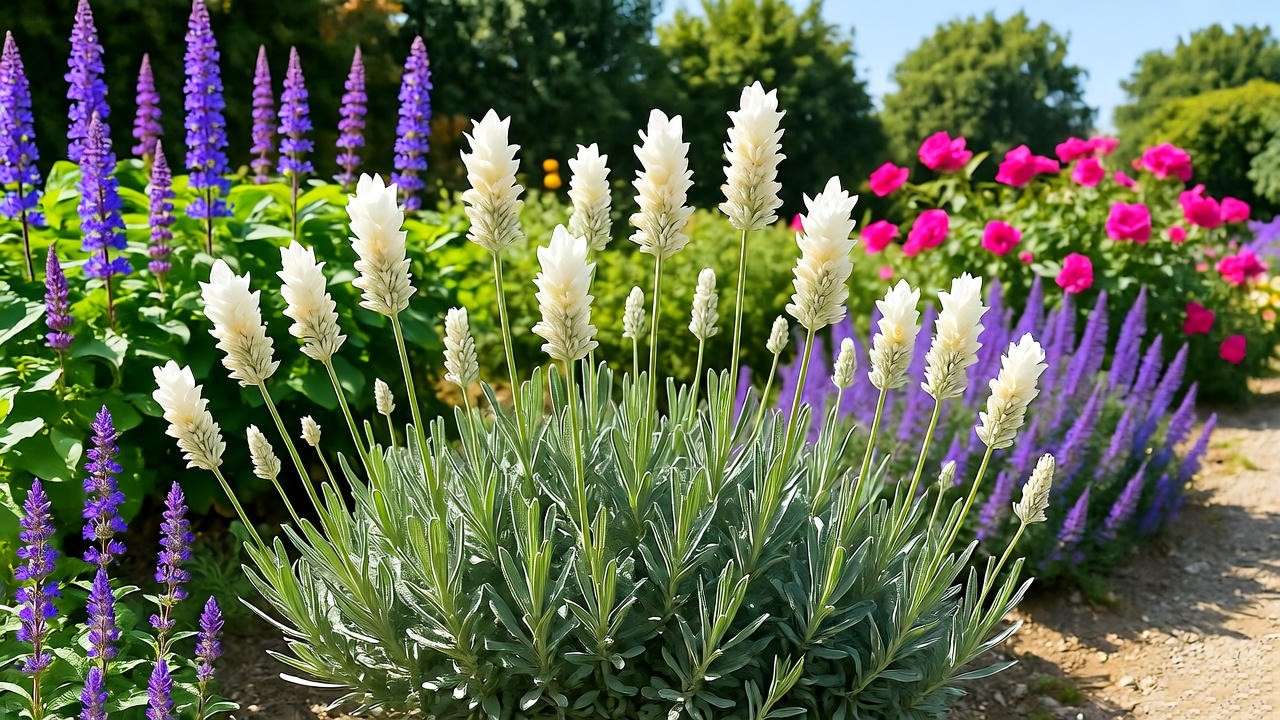
Benefits of Growing White Lavender
Why choose a white lavender plant? Beyond its visual appeal, it offers numerous benefits:
- Aesthetic Versatility: Complements modern and classic garden designs, from minimalist patios to cottage-style beds.
- Aromatherapy: Its soothing scent is perfect for sachets, essential oils, or simply enjoying in the garden.
- Pollinator-Friendly: Attracts bees, butterflies, and other beneficial insects 🐝, supporting local ecosystems.
- Low Maintenance: Drought-tolerant and resilient, it thrives with minimal care once established.
White lavender’s edible flowers also shine in culinary creations, like teas or desserts, adding a delicate floral note. Its adaptability makes it a must-have for any plant lover.
Choosing the Perfect Spot for Your White Lavender 🌞
Ideal Growing Conditions
To grow a thriving white lavender plant, location is key. Lavender craves sunlight, requiring 6–8 hours of direct sun daily to produce vibrant blooms. Well-draining soil is non-negotiable—lavender despises “wet feet.” Aim for slightly alkaline soil with a pH of 6.5–7.5. If your soil is heavy clay, amend it with sand or gravel to improve drainage. White lavender thrives in USDA zones 5–9, making it suitable for most temperate climates.
Tip: Test your soil’s pH with a home testing kit (available at garden centers). If it’s too acidic, add a small amount of garden lime to raise the pH. Proper conditions set the foundation for healthy growth.
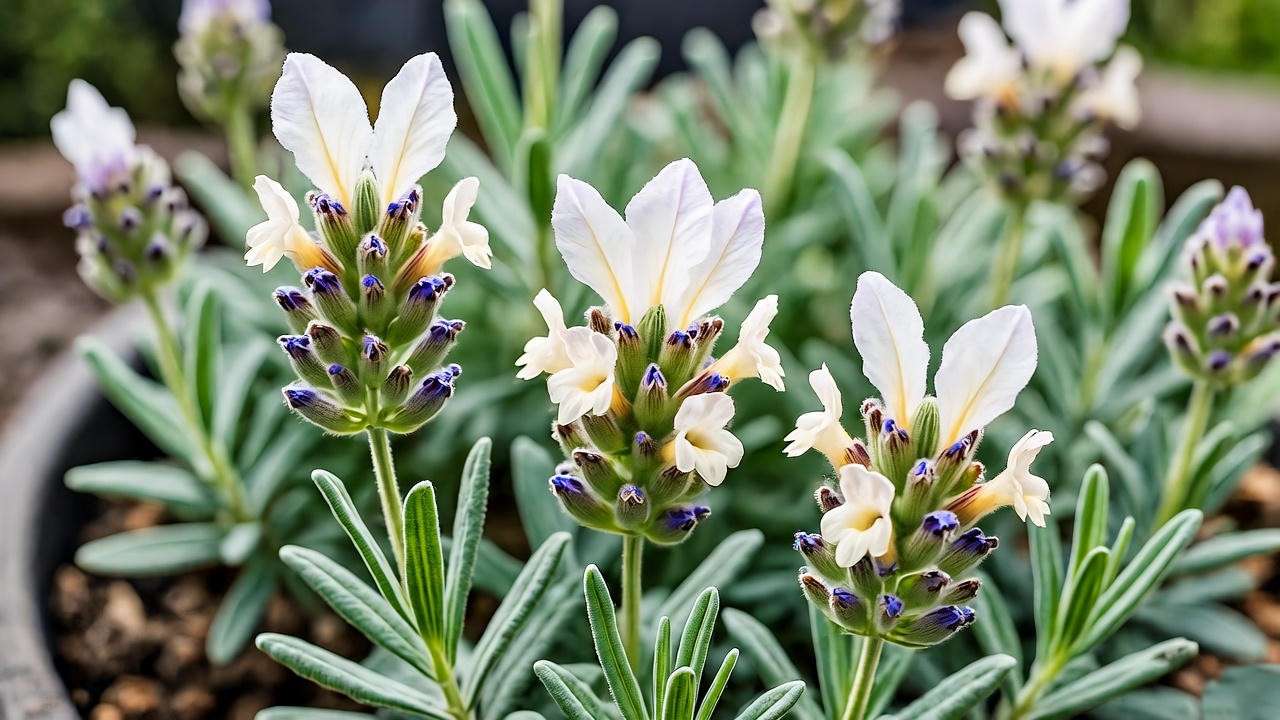
Indoor vs. Outdoor Planting
White lavender shines both indoors and outdoors, but each setting has unique considerations:
- Outdoor Planting: Ideal for garden beds, borders, or rock gardens. Space plants 18–24 inches apart to ensure air circulation, reducing the risk of fungal issues. Raised beds are excellent for controlling soil quality.
- Indoor Planting: Perfect for small spaces or colder climates. Use pots with drainage holes and place them on sunny windowsills. Ensure good airflow to mimic outdoor conditions.
For example, if planting outdoors, choose a south-facing spot with minimal shade. Indoors, a bright kitchen window with a pebble tray for humidity control works wonders. Selecting the right environment ensures your lavender flourishes.
Planting Your White Lavender: Step-by-Step Guide 🌱
When and How to Plant
Timing is critical for white lavender. Plant in spring or early fall to allow roots to establish before extreme heat or cold. Follow these steps for success:
- Prepare the Soil: Mix in compost and gravel for drainage. Avoid heavy fertilizers, as lavender prefers lean soil.
- Dig the Hole: Make it twice the width of the root ball but no deeper.
- Plant: Place the lavender so the root crown sits just above soil level. Backfill and gently tamp down.
- Water: Give a deep initial watering, then reduce frequency as the plant establishes.
Space plants 18–24 inches apart to promote airflow and prevent disease. You’ll need a trowel, compost, and gravel—simple tools for a big impact.
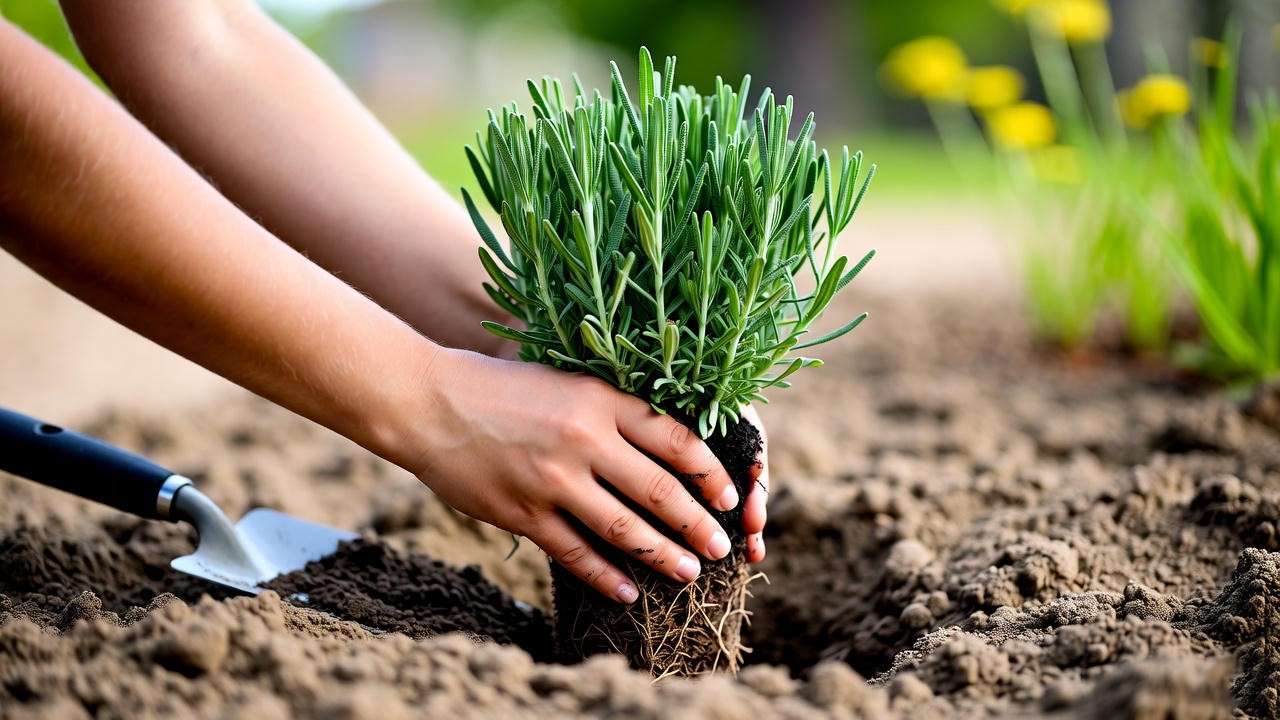
Starting from Seeds, Cuttings, or Transplants
White lavender can be started in three ways, each with pros and cons:
- Seeds: Affordable but slow, taking up to 6 months to germinate and grow. Sow indoors in late winter and transplant in spring.
- Cuttings: Faster and more reliable, preserving the parent plant’s traits. Take 4-inch stem cuttings in summer, dip in rooting hormone, and plant in sandy soil.
- Transplants: The easiest option. Purchase healthy plants from a reputable nursery for instant results.
Tip: For beginners, transplants from a trusted source like a local nursery or online retailer ensure quicker success and stronger plants. Propagation from cuttings is ideal for expanding your garden once you’re confident.
Essential Care Tips for a Thriving White Lavender Plant 🌿
Watering Wisely
Watering is where many lavender growers stumble. White lavender needs deep but infrequent watering—once every 7–10 days for established plants, less in rainy climates. Young plants require slightly more frequent watering (every 3–5 days) until roots establish. Overwatering is the leading cause of root rot, so ensure soil dries out between sessions.
Common Mistake: Watering on a fixed schedule without checking soil moisture. Use your finger to test 2 inches down—if dry, water; if damp, wait. For potted lavender, ensure excess water drains freely to avoid soggy roots.
Fertilizing and Soil Maintenance
White lavender thrives in lean soil, so heavy fertilization is unnecessary. Apply a low-nitrogen, organic fertilizer (like fish emulsion) once in spring to support growth. Over-fertilizing leads to leggy plants with fewer blooms. Mulch with gravel or coarse sand to retain moisture, deter weeds, and reflect heat, mimicking lavender’s native Mediterranean habitat.
Dr. Sarah Nguyen, a soil scientist, advises, “Lavender’s roots need oxygen as much as water. A gravel mulch not only improves drainage but also keeps the plant’s base dry, preventing fungal issues.” Test soil annually to maintain the ideal pH.
Pruning for Healthy Growth and Stunning Blooms ✂️
Pruning is essential to keep white lavender compact and blooming profusely. Prune in late summer or early fall after flowering:
- Remove Spent Blooms: Cut back flower stalks to encourage new growth.
- Shape the Plant: Trim about one-third of the green growth, avoiding woody stems.
- Prevent Woodiness: Regular pruning keeps the plant from becoming leggy and sparse.
For example, use sharp shears to cut just above a leaf node, shaping the plant into a rounded mound. This promotes bushy growth and vibrant blooms next season. Avoid cutting into old wood, as it may not regrow.
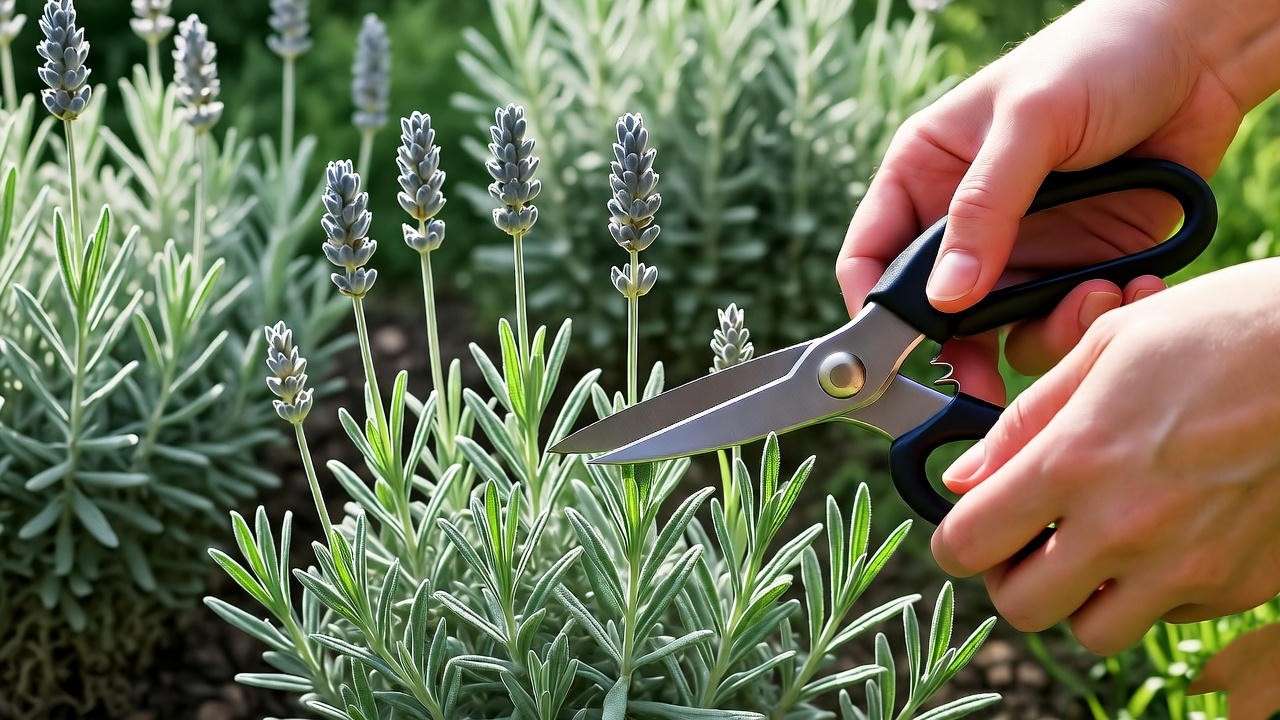
Pest and Disease Management
White lavender is relatively pest-resistant but not immune. Common pests include:
- Aphids: Small, sap-sucking insects. Spray with a mix of water and neem oil.
- Spider Mites: Tiny pests causing stippled leaves. Increase humidity and use insecticidal soap.
- Whiteflies: Control with yellow sticky traps or companion planting with marigolds.
Fungal diseases like root rot or powdery mildew arise from poor drainage or overcrowding. Ensure proper spacing and avoid overhead watering. Regular inspection and early intervention keep your lavender healthy.
Troubleshooting Common White Lavender Problems 🛠️
Why Isn’t My White Lavender Blooming?
If your white lavender plant isn’t blooming, consider these culprits:
- Insufficient Sunlight: Relocate to a sunnier spot or prune nearby plants casting shade.
- Overwatering: Check drainage and reduce watering frequency.
- Poor Soil: Test pH and amend with lime if too acidic.
For example, a reader shared that moving their lavender from a partially shaded patio to a sunny garden bed doubled their blooms the next season. Address these issues early for a flourishing plant.
Dealing with Yellowing or Wilting Leaves
Yellowing or wilting leaves signal distress:
- Overwatering: Cut back watering and improve drainage with gravel.
- Nutrient Deficiency: Apply a balanced, low-nitrogen fertilizer sparingly.
- Root Issues: Check for root rot by gently digging around the base. If roots are mushy, repot or replace the plant.
Fix: For potted lavender, repot in fresh, well-draining soil and ensure the pot has drainage holes. Monitor recovery over 2–3 weeks.
Winter Care and Protection
In colder climates (USDA zones 5–6), protect white lavender from frost:
- Mulch: Add a 2-inch layer of gravel or straw around the base to insulate roots.
- Cover: Use frost cloth or burlap on freezing nights.
- Indoor Option: Bring potted lavender indoors to a cool, sunny spot.
Tip: For indoor winter care, place near a south-facing window and reduce watering to once every 2–3 weeks. This ensures your plant survives harsh winters.
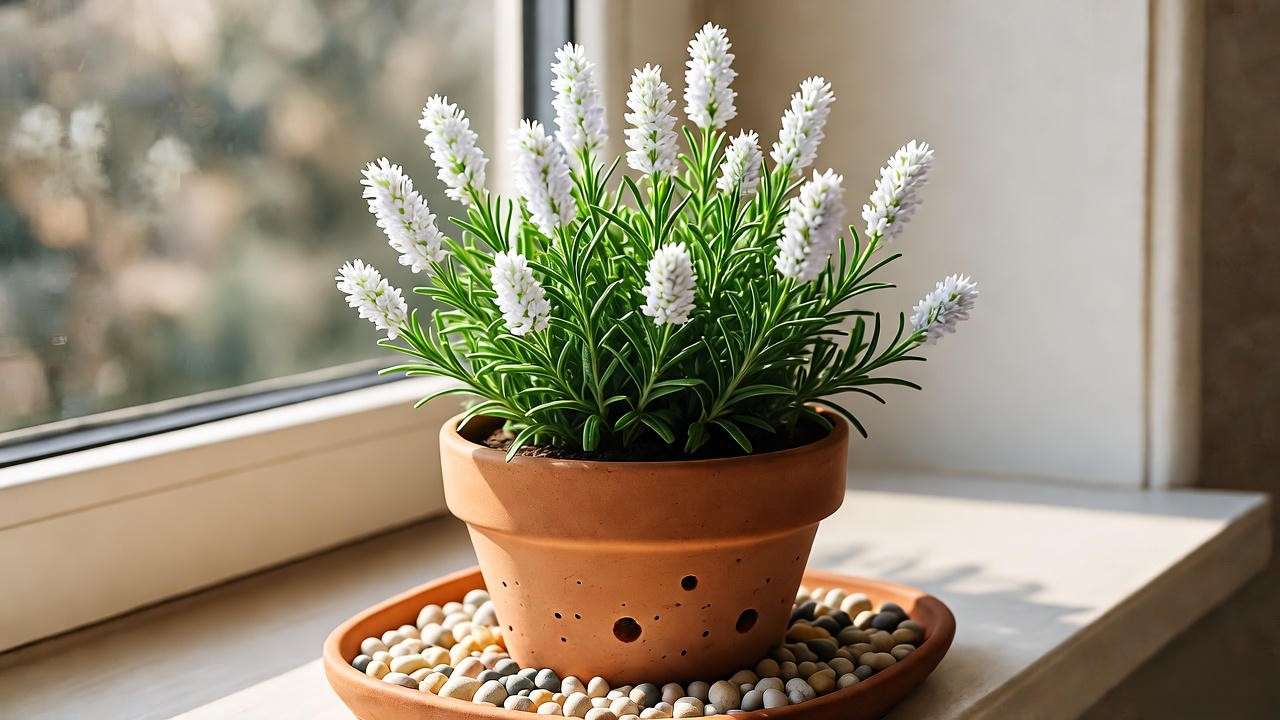
Creative Uses for Your White Lavender Plant 🌸
Landscaping and Garden Design
A white lavender plant can transform your garden into a serene masterpiece. Its soft, creamy blooms create a striking contrast against green foliage or vibrant flowers like roses or salvia. Here are some landscaping ideas:
- Borders and Pathways: Plant white lavender along walkways for a fragrant, elegant edge. Its low-growing varieties, like ‘Nana Alba,’ work best for tidy borders.
- Rock Gardens: Pair with succulents or ornamental grasses for a Mediterranean-inspired look.
- Container Gardens: Use pots to frame patios or balconies, adding a touch of sophistication.
For example, a simple garden layout could feature white lavender as a central focal point, surrounded by purple salvia and pink roses for a harmonious color palette. Space plants thoughtfully to ensure airflow and showcase their delicate blooms. Companion planting with pollinator-friendly plants like marigolds or echinacea enhances both beauty and ecological benefits 🐝.
Harvesting and Using White Lavender
Harvesting white lavender maximizes its versatility. The best time to harvest is when blooms are half-open, typically in mid-summer, to capture peak fragrance. Use sharp scissors to cut stems just above a leaf node, gathering bunches in the morning when oils are most concentrated. Here’s how to use your harvest:
- Dried Bouquets: Tie stems in small bundles and hang upside down in a dry, dark place for 2–3 weeks. Display in vases for a rustic touch.
- Sachets: Fill small fabric bags with dried flowers to freshen drawers or closets.
- Essential Oils: Distill blooms for homemade oils (consult a professional for safe methods).
- Culinary Uses: Add edible flowers to teas, desserts, or salads for a subtle floral flavor.
Recipe Idea: Try white lavender-infused shortbread cookies. Combine 1 cup flour, ½ cup butter, ¼ cup sugar, and 1 tablespoon dried white lavender flowers. Bake at 325°F for 20 minutes for a delicate, aromatic treat. Always ensure lavender is food-grade and pesticide-free before cooking.
Expert Tips for Long-Term Success 🌟
To ensure your white lavender thrives for years, follow these advanced strategies:
- Seasonal Care Calendar:
- Spring: Plant or transplant, apply light fertilizer, and check soil pH.
- Summer: Harvest blooms, prune lightly, and monitor for pests.
- Fall: Prune after flowering, reduce watering, and prepare for winter.
- Winter: Protect with mulch or bring pots indoors in cold climates.
- Propagation: Take 4–6 inch cuttings in summer, dip in rooting hormone, and plant in a sandy mix. Within 4–6 weeks, new plants will root, expanding your lavender garden.
- Sustainability: Use rainwater for irrigation and organic pest controls like neem oil to minimize environmental impact.
Jane Thompson, a lavender farmer with 15 years of experience, shares, “Consistency is key with lavender. Regular pruning and minimal watering create plants that bloom vibrantly year after year.” Test soil annually and refresh mulch to maintain ideal conditions. These practices ensure your white lavender remains a garden star.
Frequently Asked Questions (FAQs) ❓
- Can white lavender grow in shade? White lavender needs full sun (6–8 hours daily) to thrive. In shady conditions, it may grow leggy with few blooms. For low-light gardens, consider shade-tolerant plants like hostas instead.
- How often should I water my white lavender plant? Water young plants every 3–5 days until established, then reduce to every 7–10 days. Always check soil moisture to avoid overwatering, especially in humid climates.
- Is white lavender safe for pets? Lavender is generally safe but can cause mild stomach upset in cats or dogs if ingested in large amounts. Keep plants out of reach and monitor pets. Consult a vet if concerned.
- Why are my white lavender blooms fading quickly? Fading blooms may result from insufficient sunlight, overwatering, or nutrient imbalance. Ensure full sun, well-draining soil, and minimal fertilizer. Pruning after flowering can also boost next season’s blooms.
- Can I grow white lavender indoors year-round? Yes, with bright light (south-facing window or grow lights), well-draining soil, and good airflow. Water sparingly and maintain 60–70°F temperatures for best results.
Conclusion: Grow Your White Lavender with Confidence! 🌿
Cultivating a thriving white lavender plant is a rewarding journey that brings beauty, fragrance, and tranquility to your home or garden. By choosing the right location, mastering watering and pruning techniques, and addressing challenges like pests or poor blooms, you can enjoy stunning white lavender for years. Whether you’re adorning your garden with its elegant blooms, crafting aromatic sachets, or baking lavender-infused treats, this versatile plant offers endless possibilities. Start today, and let the serene charm of white lavender transform your space. Share your progress in the comments or explore our related guides, like “Top Companion Plants for Lavender” or “How to Make Lavender Essential Oil at Home,” for more gardening inspiration! 🌸













